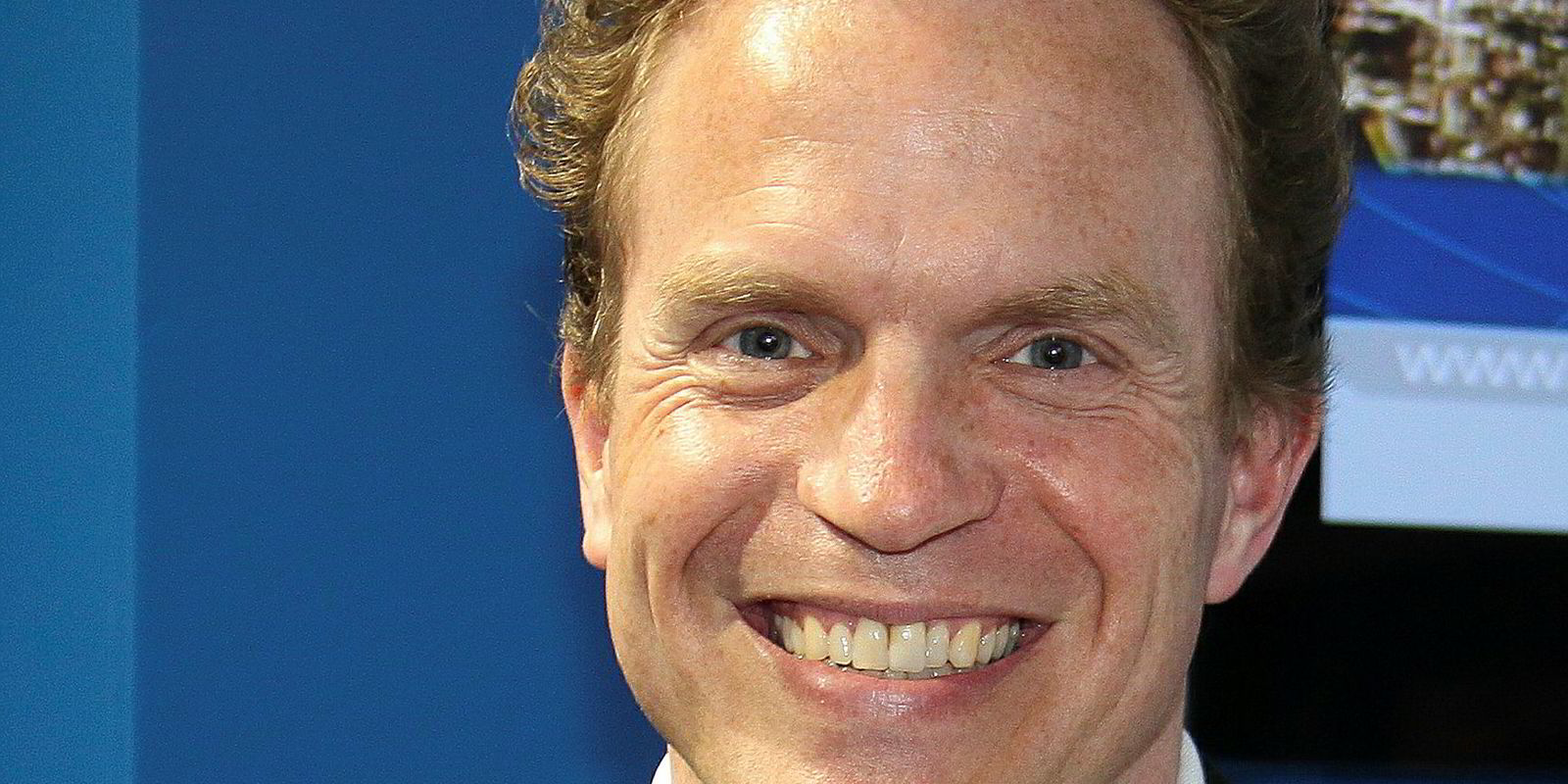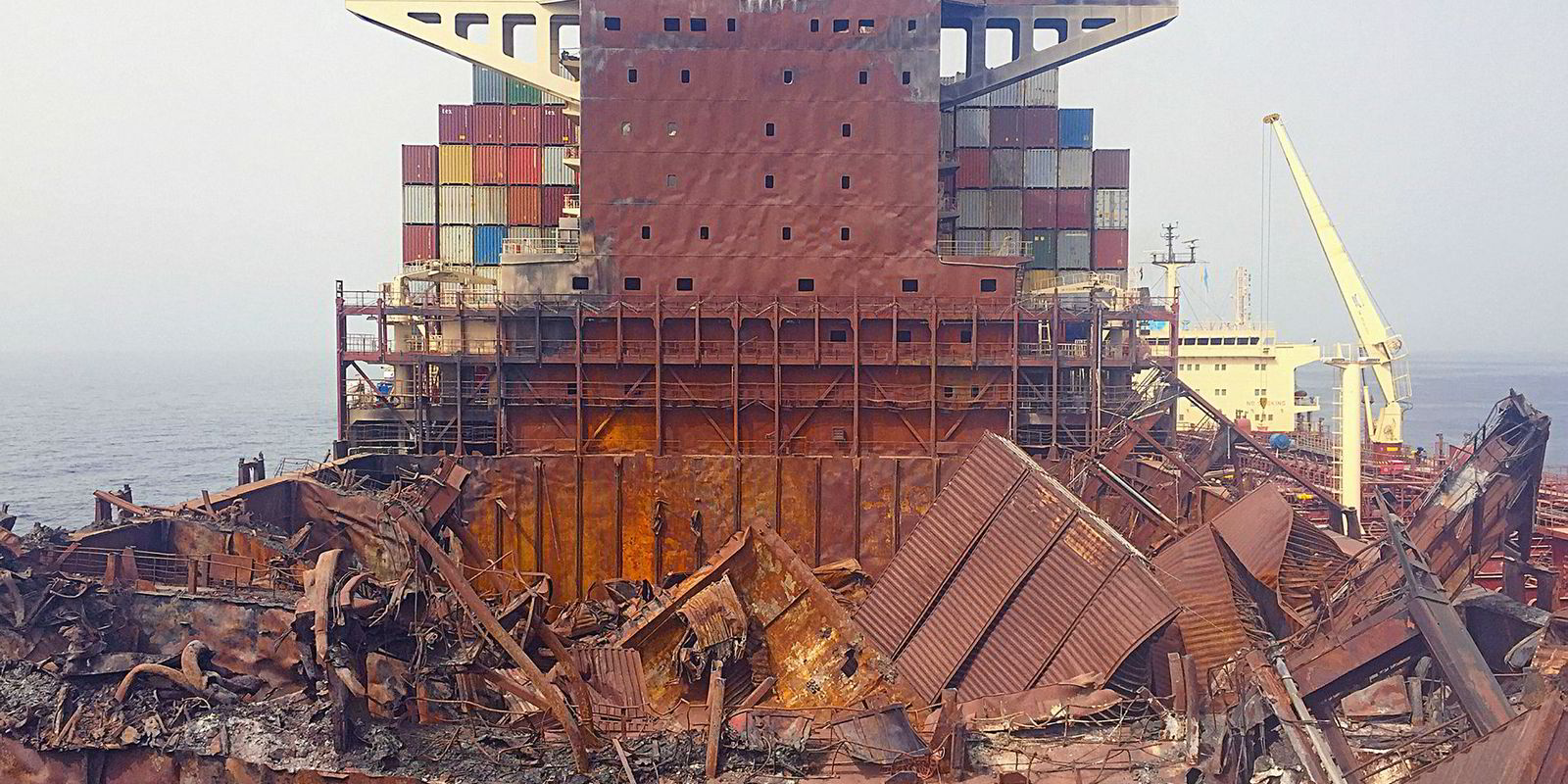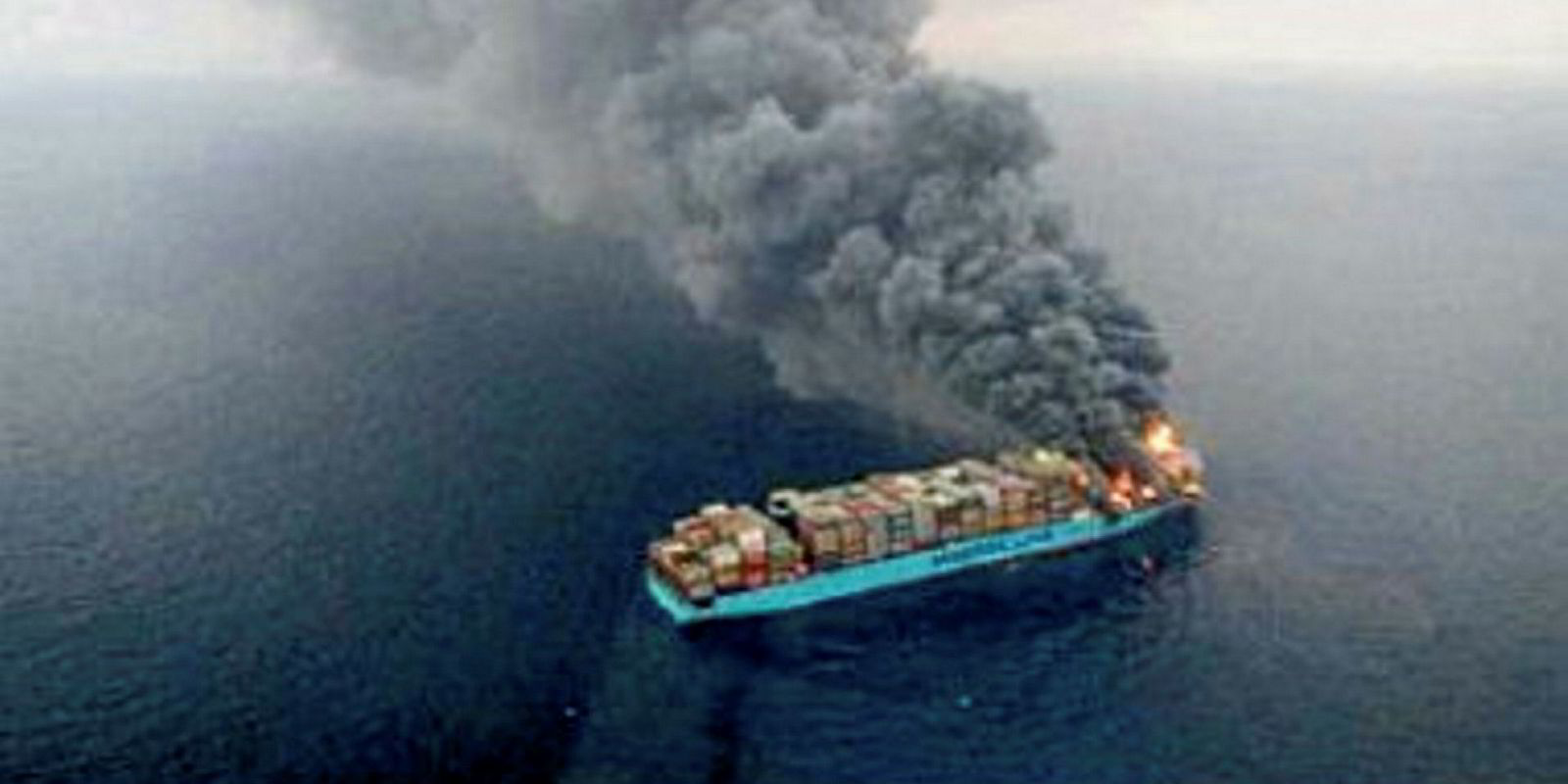Smit Salvage wants better industry understanding of the hazardous work required in handling containership fires after revealing what was involved in the Maersk Honam post-salvage operation.
The salvor, owned by the Boskalis group, was initially contracted under a Lloyd’s Open Form contract along with Ardent to handle the emergency response and firefighting operation.
Five crew members were killed when the 15,000-teu Maersk Honam (built 2017) caught fire in March last year while sailing in the Arabian Sea.
The longest and potentially most dangerous part of the salvage operation turned out to be the removal and safe disposal of 27,000 tonnes of hazardous waste at the ship’s port of refuge in Dubai.
The post-salvage operation included handling and disposing of 7,000 tonnes of damaged containers and scrap metal, 16,000 tonnes of non-metallic debris and 4,000 tonnes of contaminated firefighting water.
Smit Salvage managing director Richard Janssen described it as an “immense job”. With a major fire on a containership occurring at a rate of one every 66 days, according to the TT Club, and with up to 12% of the six million teu shipped annually estimated to be hazardous, salvors are having to cope with many similar incidents.
“The industry has to understand that a shipowner’s problem is not over when the initial emergency is dealt with. We strive to help our shipowning clients and their underwriters by being aware of the ‘end-game’ and working together with them towards the most economic outcome of the incident,” Janssen said.
“Where possible, we adapt our techniques and operations, focusing on dealing with and disposing of firefighting water and affected cargo or its remains.
“Clubs need to appreciate that when this water and cargo is classed as waste, it triggers a whole different set of governing laws and regulations.
“And for this they need a reliable contractor supported by a network of specialists that they jointly can fall back on.”
The protection of human life in removing the waste in a hazardous, toxic environment became a priority of the Maersk Honam post-salvage operation.

Janssen said his “overarching objective” was to create a safe work environment and to have a minimum number of people working in the most dangerous locations. That involved managing all the design, equipment specifications, personnel selection, procedures and interfaces between the parties. “Nothing was left to chance,” he said.
Salvage workers also had to deal with smoke and dust coming from the cargo, potentially molten cores and chemical waste and gasses from deep within the holds. “No effort was spared to protect them,” he said.
Smit Salvage had to train people to work in a toxic gas environment, establish safety systems and provide an escape route and recovery methods to protect people working in the holds.
Salvage crew wore full gas suit protection and were allowed to work for only 30 minutes at a time in the Dubai heat. Cool-down areas were set up onboard for workers.
Purpose-built facility
The waste was removed mostly using two jack-up rigs positioned alongside the ship. With no suitable waste disposal facilities in Dubai, a purpose-built reception, handling and storage facility was built at Port Khalid in neighbouring Sharjah.
The company also had to obtain “no objection” certificates from the United Arab Emirates authorities and permission for the cross-border shipping of waste according to international regulations.
The Maersk Honam is being rebuilt at Hyundai Heavy Industries in South Korea. The job involves replacing the forward section, including the accommodation unit.





